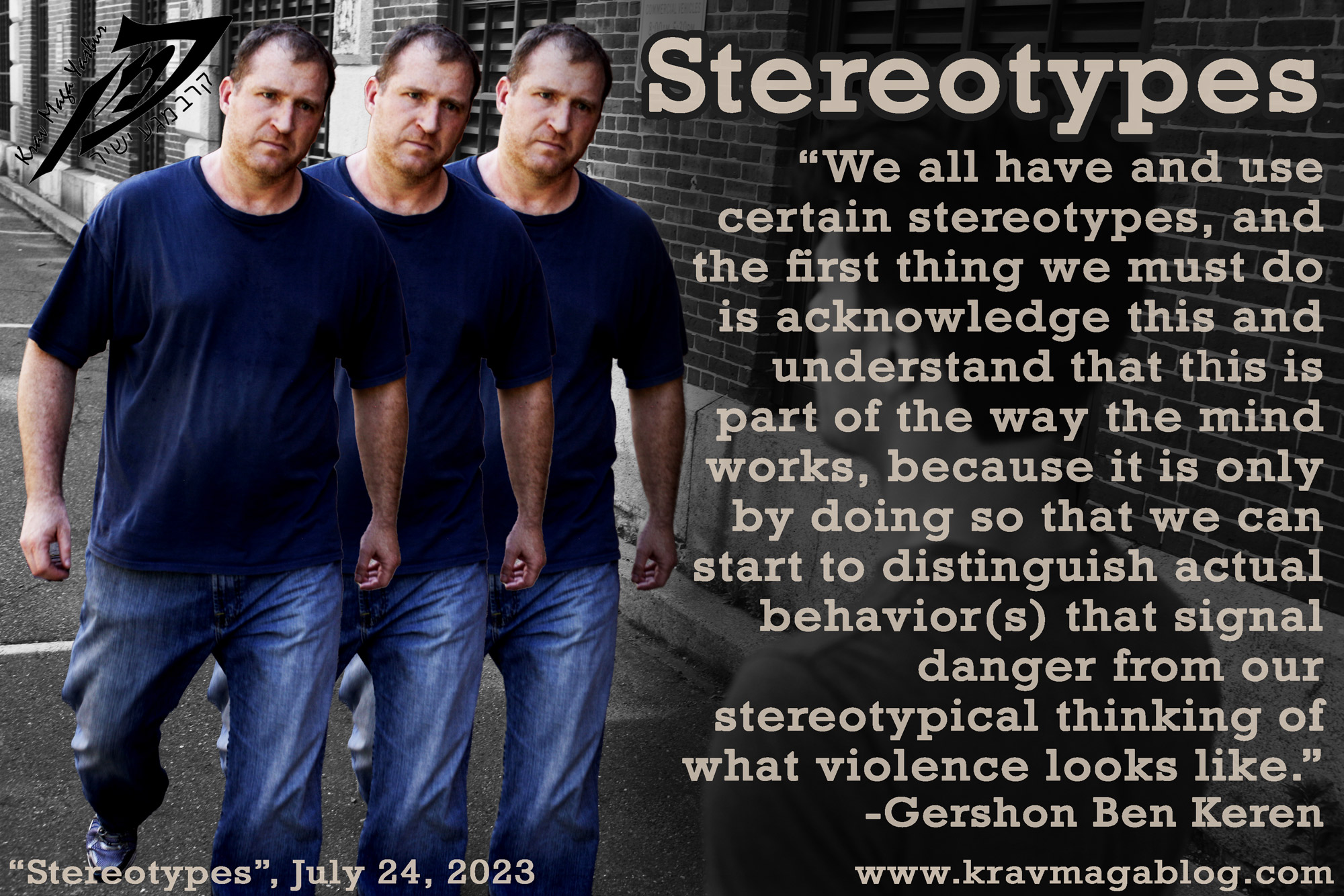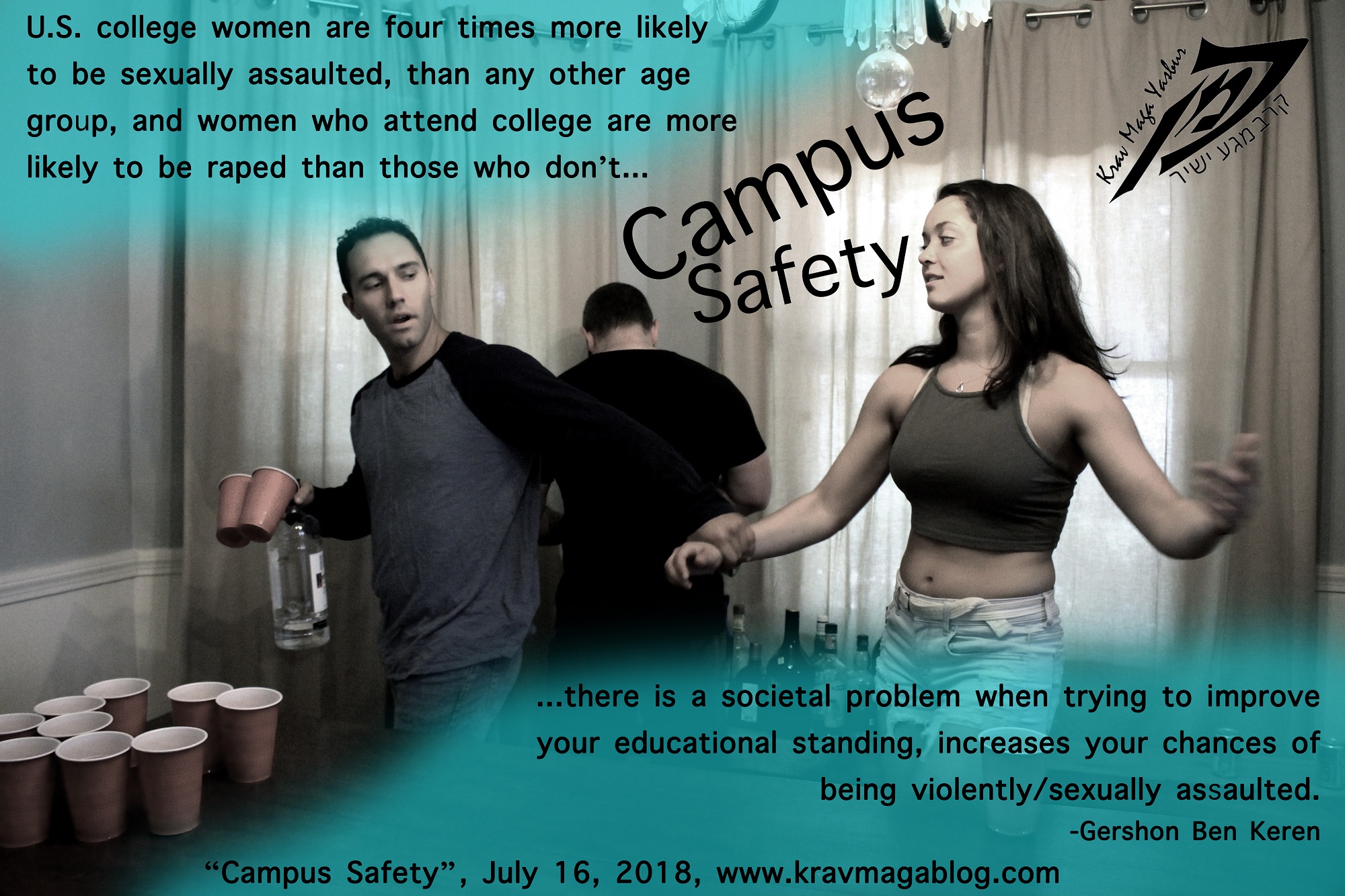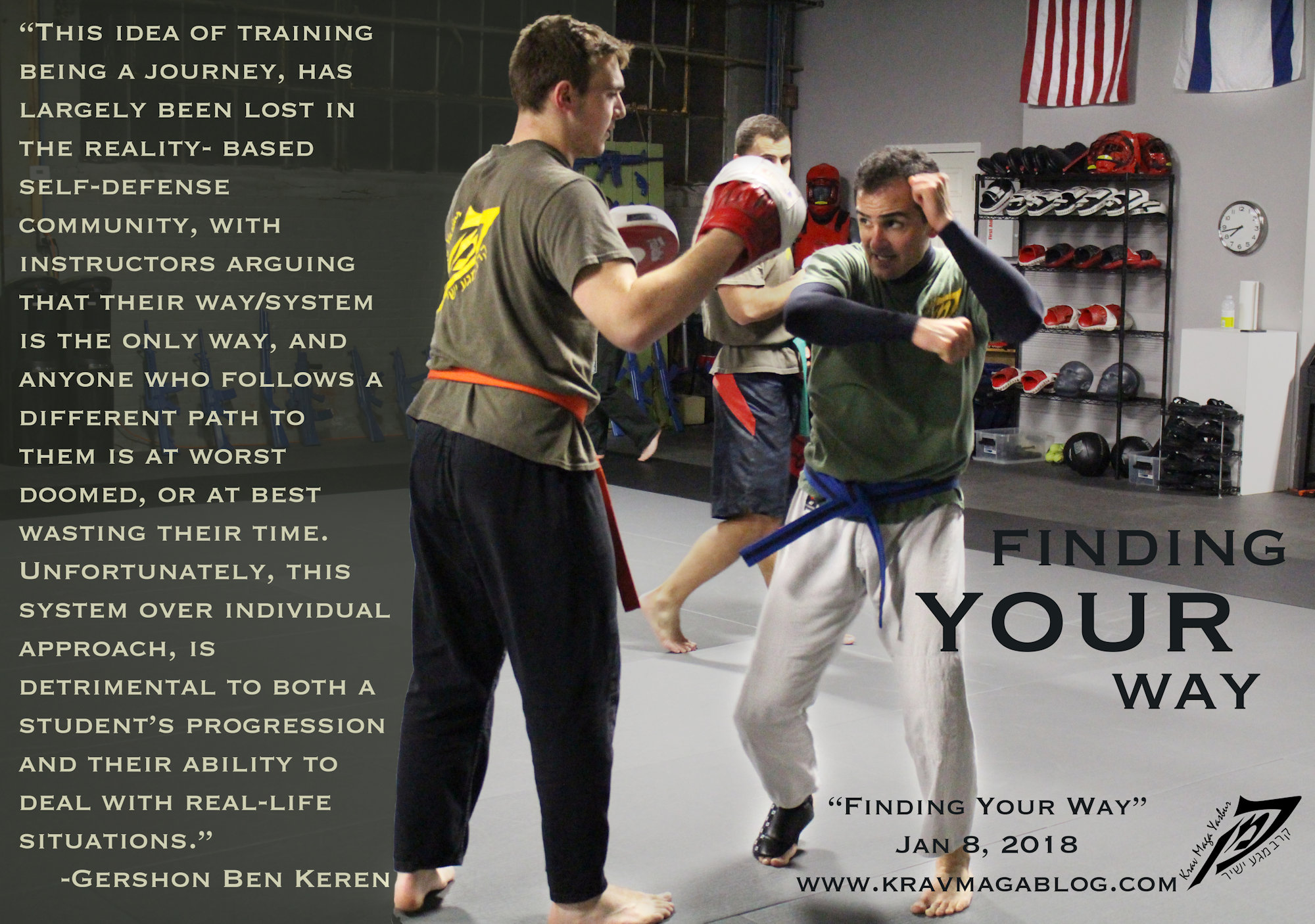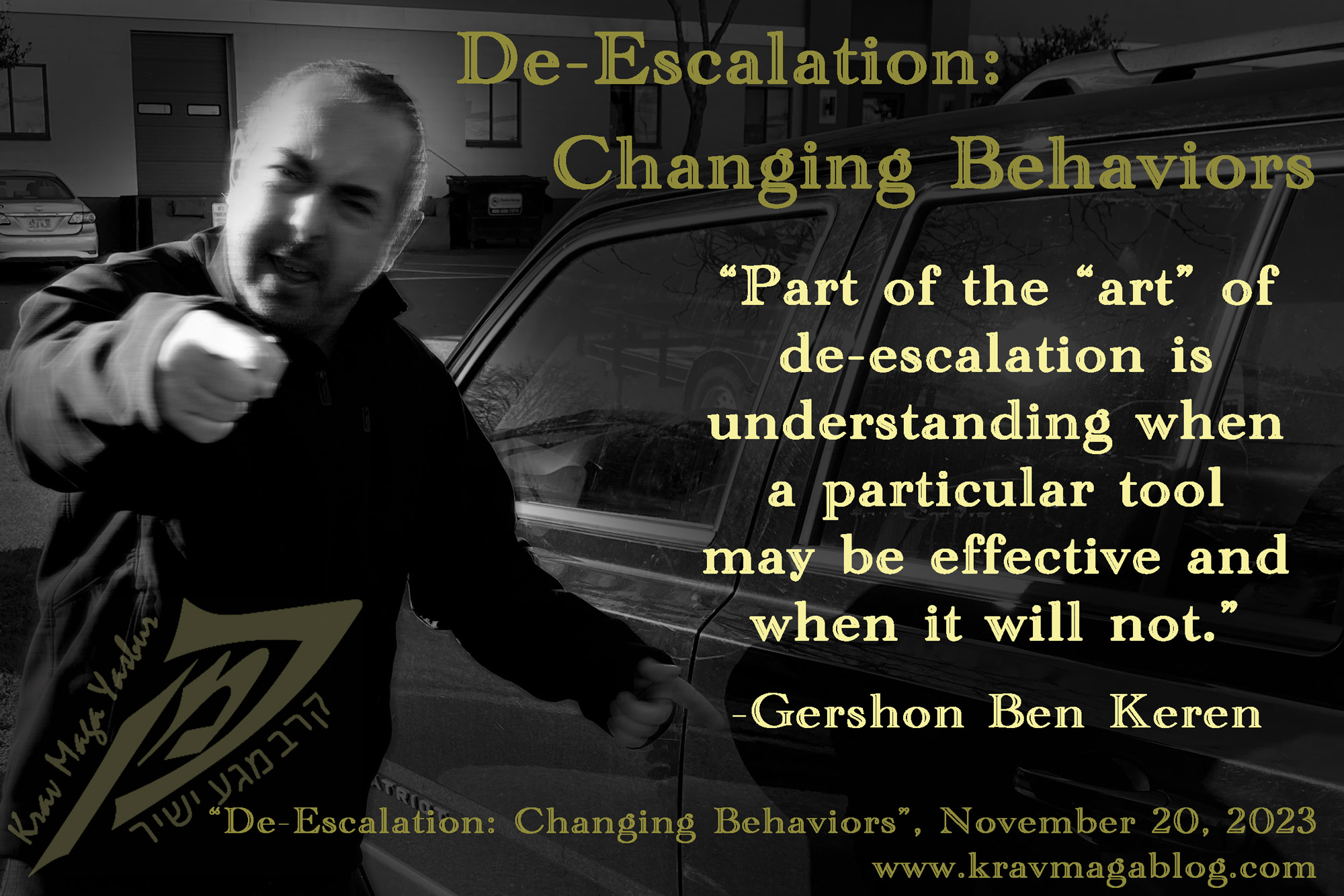De-escalation & Changing Behaviors, is an article written by Gershon Ben Keren, a 5th Degree Black Belt in Krav Maga, who teaches Krav Maga in Boston, MA. He has also authored three Amazon best-Selling Books on Krav Maga.
Because de-escalation involves emotional people, it is good to have a number of tools that can be used to help direct an aggressor to consider non-violent alternatives during a verbal confrontation. De-escalation is not a universal approach that can be applied to all aggressive interactions e.g., a mugger who is engaged in a street robbery is unlikely to be “talked” out of it, as they have a defined goal/outcome that they have set out to achieve i.e., relieve you of your possessions. However, someone who has become aggressive due to an external event, rather than an internal motivation, presents an opportunity for attempting a de-escalation process e.g., someone who has become aggressive towards you because they return to their car in a parking lot and believe that you’re responsible for the dent in their fender/bumper, is a suitable candidate for de-escalation and conflict resolution etc. In this article I want to look at two different tools that can be used as part of this process: “But” questions and Positive Choices. It should be noted that these two solutions are not appropriate in every situation, and that they may need to be used in conjunction with others. Part of the “art” of de-escalation is understanding when a particular tool may be effective and when it will not.
Part of the de-escalation process is to keep an aggressor in touch with their “Reasoning Brain”. When people become highly emotional and aggressive this starts to switch off, and they are unable to think rationally, considering violence as the only permissible and inevitable outcome. The quickest and easiest way to get an aggressive individual to re-engage with their “Reasoning Brain” is to ask open-ended questions, such as “What can I do to sort this out?” This gives them an opportunity to consider which outcomes might be satisfactory to them. However, sometimes these outcomes might not be good ones for you, or ones that you are able to meet and fulfill e.g., a driver who believes you hit their car – even though they didn’t see it happen, might demand that you immediately hand over $500 to them. This is both unfair and unreasonable and something which you shouldn’t have to acquiesce to. However simply saying “No” is likely to escalate the situation, so you want to try and keep your aggressor working with their “Reasoning Brain”. So far, they’ve at least been able to consider at least one alternative to acting violently i.e., you giving them $500. This means that they’ve at least started to think in a slightly more rational way, which is something you’ll want to help them to keep doing. One way to do this is to use “But” questions. This is where you say something along the lines of, “I understand why you might feel/believe/think that would be fair/reasonable but I’m not able to agree to that, is there anything else you can think of that would solve this situation?” In this moment if the person is still seeming extremely aggressive and emotionally volatile, they will not be in the right headspace to hear your reasons and explanations as to why you couldn’t be the one responsible for hitting their car. It may be that you have to repeat your “But” questions several times (possibly changing up whether you use the words feel, think, and believe to make it sound less rehearsed) before they are ready to hear this. Trying to explain that they are wrong in their accusation too early whilst they are still highly emotional is likely to see the situation escalate as they’ll take your response to be one of posturing.
Another tool you can use to help de-escalate a situation and change a person’s behavior is to give them choices. This is something that I used to use a lot when I was working in pub/club/bar security. Sometimes, I would have to intervene when a fellow doorperson was talking to a member of a group, and those in their party wanted to get involved. I might initially make a request, “If you’d like to just stand over there, I’ll find out what’s going on.” If they refused the request, I might give them a couple of options, “Would you rather stand over there, or stand with the rest of your group?”. The first request was usually used as a setup, for providing them options i.e., to stand over there, or back with their group. I usually presented/requested the less favorable option first. If they acquiesced to the request, it was a win (I also had the opportunity to see how malleable and easy to handle they were), if they didn’t, I could then give them a better option to take. This allowed them to feel that they weren’t necessarily being told what to do but rather that they had some control over the incident. There were a couple of directions I could go from here. One would be to give them slightly more control by asking them, “What could I say or do, to make you either go and stand over there, or rejoin your party, whilst I find out what’s going on with your friend?” It might be that I then had to use some “But” questions if whatever they wanted wasn’t something I could entertain. At some point I might have to enforce a boundary and give a third choice e.g., “OK, you can either go and stand over there, rejoin your group/party, or I can call some other of the security staff over and we can have you, your party, and your friend, leave the club. What do you want to do?” The individual has now been given two pretty good choices – stand in a space or rejoin their group – and a bad one i.e., have them and their friends removed from the club. Framed in this way most people would choose one of the good/positive choices, rather than the bad one.
I used to work with some door persons who would ask why I took the time to go through this process rather than simply go straight to enforcement i.e., throwing people out. The first reason is that many people are extremely litigious and would call law enforcement claiming that they’d been assaulted etc., as they were removed from the club/pub/bar etc. This was primarily a headache, and secondly could potentially result in a legal case – most people who involved - and complained to - the police never took it any further. The main reason though was that any physical altercation that could see the police getting called to the club could affect the renewal of the liquor license when it came up for renewal and/or see an increase in the organization’s insurance policy. If de-escalation rather than enforcement can be used to control a situation it is preferable whether that is as an individual or performing a role as a professional.
0 COMMENTS















